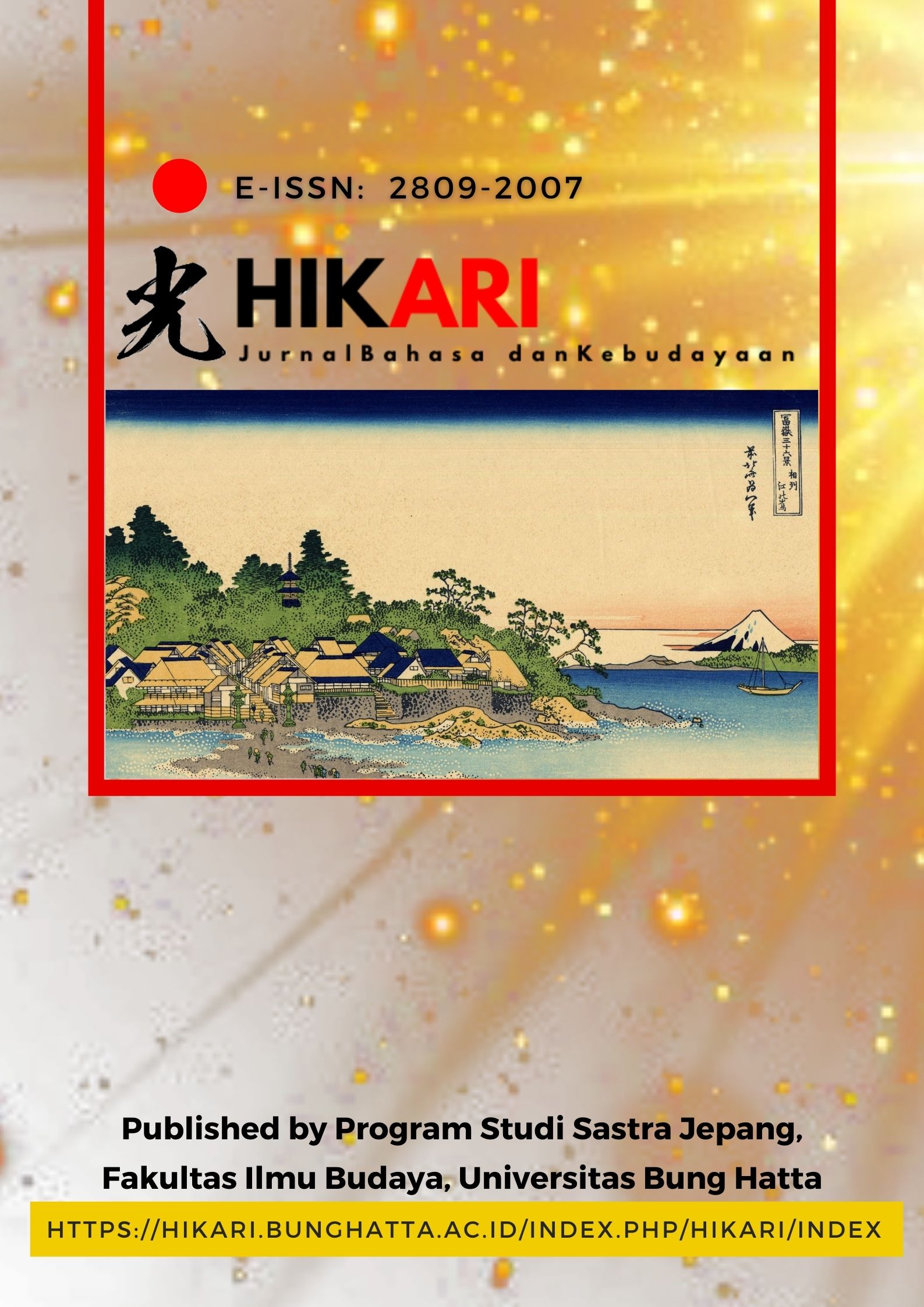TIPS UNDERSTANDING KANJI THROUGH READING ON-YOMI SEI (?)
DOI:
https://doi.org/10.37301/hikari.v2i2.32Keywords:
Kanji, On-yomi Sei (?)Abstract
This study aims to identify on-yomi sei in Kanji characters identical to bushu using the rikusho theory. Based on the data sources used in this study, the authors used a descriptive method. The data in this study is a list of Kanji that has bushu ikiru on the Kanji list contained in the book Easy and Practical Success Tips for Reaching N2 and N3 of the Gakushudo Method in 2015 written by Thjin Shiang and published by Gakushudo. The results of this study are that there are 11 data on identical Kanji using bushu ikiru. In this study, using 4 of the 7 elements of bushu theory of bushu theory by using 3 of the 6 elements of the theory of rikusho theory and using 3 changes of meaning from 5 theories of changes in meaning. One of them is identifying the element of the bushu, if there is one that is identical/similar it is likely to have the same On-yomi reading.
References
Chaer, Abdul. 1995. Pengantar Semantik Bahasa Indonesia. Rineka Cipta. Jakarta.
Dahidi, Ahmad dan Sudjianto. 2007. Pengantar Linguistik Bahasa Jepang. Jakarta: Kesaint Blanc.
Renariah. 2002. Bahasa Jepang dan Karakteristiknya. Jurnal Sastra Jepang. Vol. 1(2).
_______.2004. Mengingat Kanji melalui Bushu. JurnalFokus. Jurusan Pendidikan bahasa Asing FPBS UPI.Vol. 1(2).
Sepni, Rahtu. N. 2015. Hubungan Kanji Bermakna ‘Kerja’ dengan Etos Kerja Masyarakat Jepang. Padang: Bung Hatta University Press.
Sudaryanto. 2015. Metode dan Aneka Teknik Analisis Bahasa. Sanata Dharma University Press.
Syahrial, dkk. 2015. Perilaku Pilih Bahasa dan Alih Kode Di Kalangan Mahasiswa Program Studi Sastra Jepang Universitas Bung Hatta. Jurnal Suluah. Vol. 17(21).

Downloads
Published
Issue
Section
License
Copyright (c) 2023 Hikari: Jurnal Bahasa dan Kebudayaan

This work is licensed under a Creative Commons Attribution-ShareAlike 4.0 International License.





